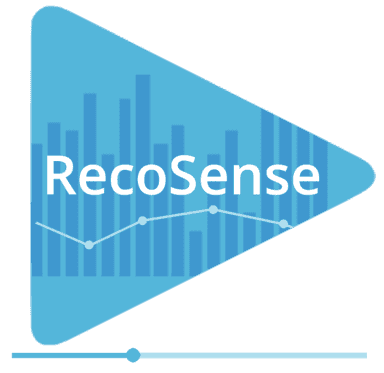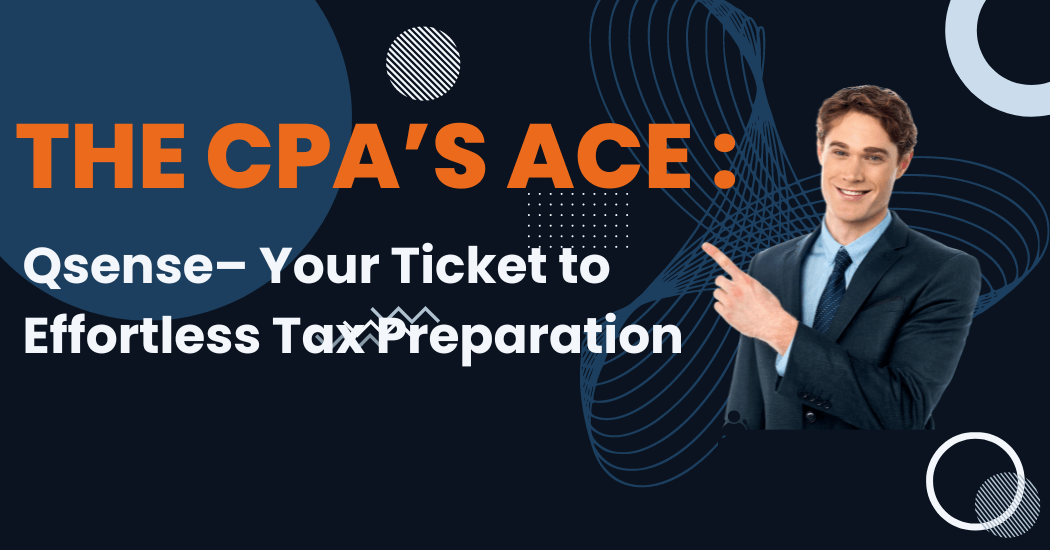Let us be honest; tax filing is more than just numbers and complex tax calculations. It involves a higher degree of intellectual process where keen observation of data and timely actions/decisions must be made.
Tax preparation itself is a Herculean task, and finding space in between for intellectual tasks is a bit overwhelming, especially during the tax filing seasons. Using AI-powered tax preparation software, certified public accountants (CPAs) and EAs can do tax preparations swiftly & accurately and at a higher scalable pace.
Here is how AI-powered tax preparation software outperforms regular tax preparation software.
1. Document Gathering & Data Extraction
All the relevant records, from W-2s and 1099s to bank statements and investment statements, need to be collected. Instead of manually entering the data in the legacy tax preparation software and manually finding the relevant information, CPAs and EAs can upload the documents to Qsense.
Qsense is one of the best AI tax preparation software that allows users to extract the required results easily via the Natual Language Query system. I.e., the users can simply type in the queries they have, just like chatting, and the AI system will fetch the relevant information from the uploaded files.
The automatic extraction and classification of the data reduce the initial tax preparation time by half and lets the Certified Public Accountants (CPAs) work on the crucial parts.
2. Filing Status and Form Selection
The tax rates and deductions vary based on the filing status, like whether you are filing tax as an individual or married, filing jointly or as the head of household. Correspondingly, the form selection will change (1040, 1040A, or 1040EZ). The more complex the situations, the more relevant additional forms and schedules will be needed.
Regular tax preparation software can assist the CPAs and EAs through the process but with a limited amount of personalization. With the help of an AI-powered tax preparation system, you can generate a more detailed 360-degree report. This, in turn, will help you make a more tailored filing status based on user-specific data, optimizing deductions and credits for individual situations.
3. Astute Automated Calculations
A normal tax preparation software will have a predefined set of rules that help you achieve standard calculations. Meanwhile, the AI-powered tax preparation solution uses advanced algorithms and machine learning for more accurate and dynamic calculations based on the user data.
Due to the predefined set of rules, legacy tax preparation software can only provide generic recommendations on deductions and credits. Whereas the AI platform can come up with personalized recommendations based on analyzing the individual's financial condition.
4. Keeping Up With The Compliance
Through regular updates, both normal tax preparation software and AI-powered solutions can help the CPAs stay in line with the latest compliance and regulations. Where the AI solution stands out from regular tax preparation software is that it continuously monitors the records and uses machine learning to adapt to new regulatory changes in real-time.
5. Adaptable and Scalable
The AI system can quickly understand the individual user's behavior through machine learning. Therefore, the CPAs and EAs can experience a more tailored workflow experience that resonates with their working style and thereby improves productivity and scalability.
A quick comparison
Here is a quick comparison of AI-powered tax preparation service and tax preparation service using regular software.
|
Feature |
Regular Tax Software |
AI-Powered Tax Software |
|
Data Entry |
Manual entry of information with some autofill features. |
Enhanced data entry with natural language processing (NLP) and chatbot interfaces for more intuitive interaction. |
|
Calculations |
Standard calculations based on predetermined rules. |
Advanced algorithms and machine learning for more accurate and dynamic calculations based on individual user data. |
|
Error Checking |
Basic error-checking features. |
Advanced error detection using machine learning to identify subtle discrepancies and potential issues. |
|
Recommendations |
Provides general deductions and credits based on predefined criteria. |
Offers personalized recommendations using AI algorithms to analyze individual financial situations. |
|
Filing Assistance |
Guides users through the process but with limited personalization. |
Tailored guidance based on user-specific data, optimizing deductions and credits for individual situations. |
|
Audit Support |
Basic support and general advice. |
Utilizes predictive analytics to offer insights into the likelihood of an audit and provides preemptive guidance. |
|
Regulatory Updates |
Regular updates based on known tax law changes. |
Continuous monitoring and machine learning to adapt to real-time regulatory changes. |
|
Data Security |
Adheres to standard data security measures. |
Incorporates advanced security features, especially in handling sensitive financial information. |
|
User Interface |
Traditional interface with standard forms. |
Intuitive and interactive interfaces with NLP and NLQ system, making the process more user-friendly. |
|
Adaptability |
Limited adaptability to individual user behavior. |
Adapts and learns from user behavior over time, improving recommendations and overall user experience. |
The Era Of AI
In the era of AI, utilizing the potential of AI solutions will help businesses provide more personalized and on-time services to their clients. CPAs and EAs can also make use of powerful platforms like Qsense to streamline the tax preparation time and stay ahead of the competition. AI-powered solutions are the ace-up-the-sleeve for effortless tax preparation.

